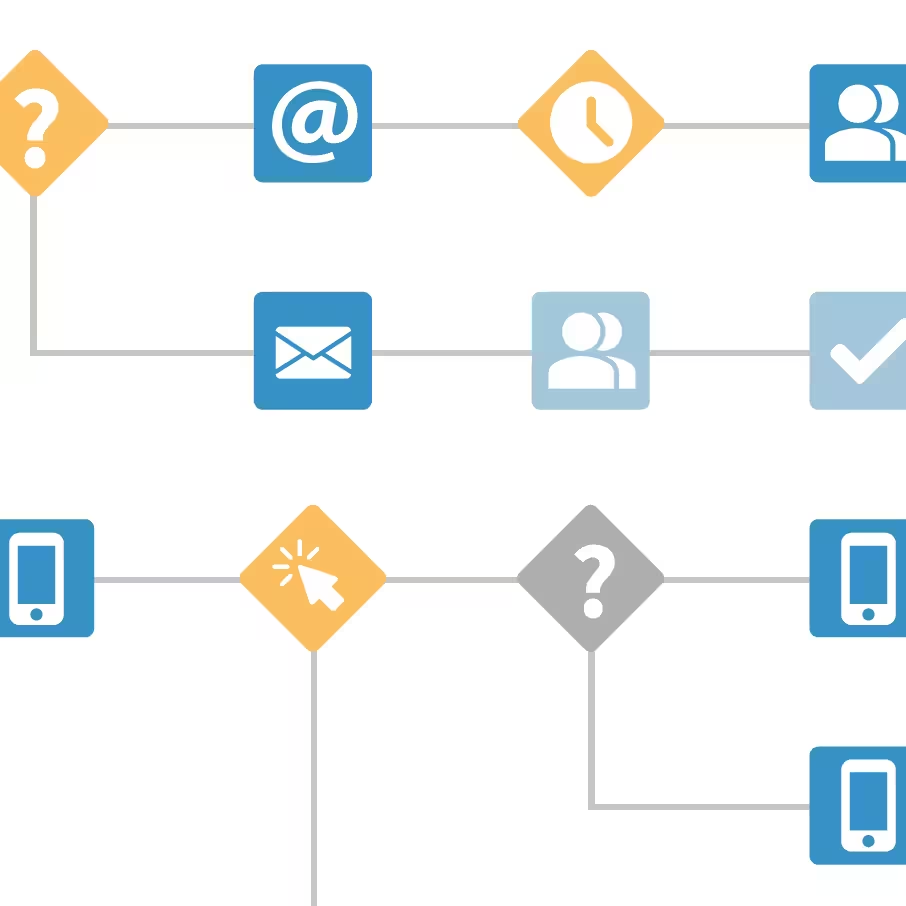WhatsApp in multichannel marketing
For the EHI Retail Institute, we determined for the first time in 2018 how the 1,000 top-selling online shops in Germany conduct email marketing. On the sidelines of our empirical research, we were still on the lookout for a new trend: marketing via messenger. We have subscribed to all available messenger newsletters and investigated which shops use this channel and how.
WhatsApp, Facebook Messenger, Threema, WeChat, and Telegram are known to many as chat apps. However, for some time now, German online shops have also been using MessengerApps for their marketing — but so far only WhatsApp. This is primarily explained by the enormous reach of the messenger service: According to the GfK Crossmedia Visualizer, WhatsApp reached 82.8 percent of the German online population in April 2018.

WhatsApp changes terms of use
June 2019: Whatsapp wants to prevent the sending of newsletters via the broadcast function via terms of use in the future. From December 7, 2019, Whatsapp wants to take legal action against those who use the service for automated mass mailing or for advertising purposes. Services such as MessengerPeople or Whappodo no longer offer the messenger newsletter function for WhatsApp but only for Facebook Messenger, Telegram or Insta Messenger.
Which companies use WhatsApp for what?
With such reach, it can be assumed that the WhatsApp marketing business is booming. However, this is not yet the case, as our surveys show: Among the 1,000 verified e-commerce operators, only 39 (3.9%) currently use Messenger for their marketing. However, there are also ten online shops that offer a WhatsApp newsletter but do not send any news at all. The remaining 30 companies consist of lifestyle brands such as fashion, jewelry and perfume shops (16 out of 30) and shops selling food and nutritional supplements (5 out of 30). The two industry exotics among WhatsApp marketers are the retail and service group BayWa and the sound technology manufacturer Teufel, which mainly send out current offers. The mailing frequency ranges from daily news (8 shops), over 2-3 times a week (13 shops), once a week (2 shops) to completely irregularly (7 shops).
Visually, the contributions from the analyzed online shops all look similar: images are combined with text, emojis and links, as WhatsApp also offers hardly any structuring and formatting options. It is therefore even more important than convincing with the content of an e-mail newsletter. Only one shop made use of the option to send voice messages via WhatsApp and greets new subscribers with a personal message from the owner.
In terms of content, WhatsApp is primarily used by online shops to distribute offers. 22 of the 30 active shops send messages once or several times a week about exclusive deals, but also about trends, new releases and highlights. Companies such as Reishunger and Alnatura also regularly send out new recipe ideas with their products. Due to the design restrictions and the risk of getting lost in the sheer mass of news, these are usually only short versions of the recipes, which can be retrieved via the link provided. The link also offers companies the advantage of being able to measure the click rate. The e-commerce companies we spoke to reported positively about the subscription rates, which rose faster than traditional email newsletters, and the above-average conversion rate.
Although 26 other online shops do not send any news or offers via WhatsApp, they use Messenger instead as a support and service channel for their customers.
Chatting with companies and users
Traders use the broadcast function for their WhatsApp newsletters instead of the confusing WhatsApp groups that are problematic in terms of data protection law. This has the advantage that users cannot send each other messages, let alone see other numbers, and at the same time there is individual contact between user and company.
The simplest way to implement a WhatsApp newsletter by operator is via a simple smartphone with WhatsApp and a user account that acts as a corporate contact. The broadcast list is built up by publishing the number on your own website or by pressing a button. Broadcast messages can be created and sent directly in WhatsApp. WhatsApp marketing is becoming more professional and handy by external service providers for post creation and registration handling, such as MessengerPeople, Whappodo or atms. However, using the desktop application or WhatsApp Web, the browser version of WhatsApp, can also increase the convenience of creating new posts, as images, texts and links can be inserted via drag & drop and sent with one click.
It is interesting how WhatsApp senders deal with direct user feedback via WhatsApp: The majority of the companies tested currently use WhatsApp exclusively as a push channel and continue to answer customer inquiries only via email or telephone. If subscribers give feedback via WhatsApp, they receive an automated message that links to alternative contact channels. Apparently, only a few companies have built up the necessary processes and capacities in community management to offer their users bidirectional direct support via WhatsApp chat.
How do I sign up for a WhatsApp newsletter?
Those interested in newsletters need a smartphone with WhatsApp installed. The easiest method of registration is via QR code. After scanning, registration in the opened chat is completed by sending the word “Start” or the automatically inserted message. Much more often, however, newsletter delivery is not initiated via QR code, but by manually entering the company's phone number and sending the start message. If you are connected to the WhatsApp Web browser version, you can also start the chat directly by clicking on a button on the company's website to avoid manually typing in the number.
Unsubscribing from the newsletter works the same way for all providers. If users decide to cancel their subscription, the message “Stop” is sufficient. To delete all data from the company's servers, they must also send the message “Delete all data.”
The pros and cons of WhatsApp marketing
Pro
- Easy and convenient for the user
- Messages reach the recipient instantly and reliably
- Messages end up in the app between chats with friends and acquaintances
- Easy to set up GDPR-compliant due to the deliberate, multi-step login by the user without a double opt-in
- Well suited for offers with short duration or limited availability
- Thanks to WhatsApp push notifications, messages are even visible on the lock screen
- The “Mute” function allows users to turn off notifications to actively check for offers as needed. The risk of being declared as spam and unsubscribed decreases
- The intersection of WhatsApp users with advertisers' customers and prospects is very large due to the almost nationwide use of WhatsApp
- Possible offer users a category selection in order to be able to advertise more precisely
- Integration of (trackable) links is easily possible
- Few design options and therefore consistent presentation on all devices and operating systems
Contra
- Few design options
- If the broadcast function is used in violation of the rules, the company phone number can be completely blocked, causing the entire broadcast list to expire
- Open question about how to deal with user contacts via WhatsApp with increasing user numbers
- Little room for detailed content
- Dependency: Push channel under full control of quasi-monopolist Facebook
Will WhatsApp replace email marketing soon?
No Despite the supposedly few disadvantages of WhatsApp, there is no discernible shift effect from email marketing to messenger marketing for the time being. With the exception of what BayWa offers, all messenger newsletters examined are only complementary to the actual e-mail newsletter and rely heavily on short-term offers instead of more extensive information. The compactness and limited design options of WhatsApp also severely restrict the range of uses. Nonetheless, WhatsApp marketing is definitely a useful addition to the multichannel marketing strategy. The fundamentally simple setup and the uncomplicated yet secure consent process also ensure that companies can try out this method of communication without significant hurdles. With regard to the good conversion and registration rates described to us, we assume that these are not least due to the low supply available at the moment — advertising technology on WhatsApp is not yet over-communicating. In this way, agile companies clearly benefit from an early start in this market. The future will show how users will behave as soon as more and more players share the formerly purely private message inbox and the messages are jammed up as if they were in their e-mail inbox.













